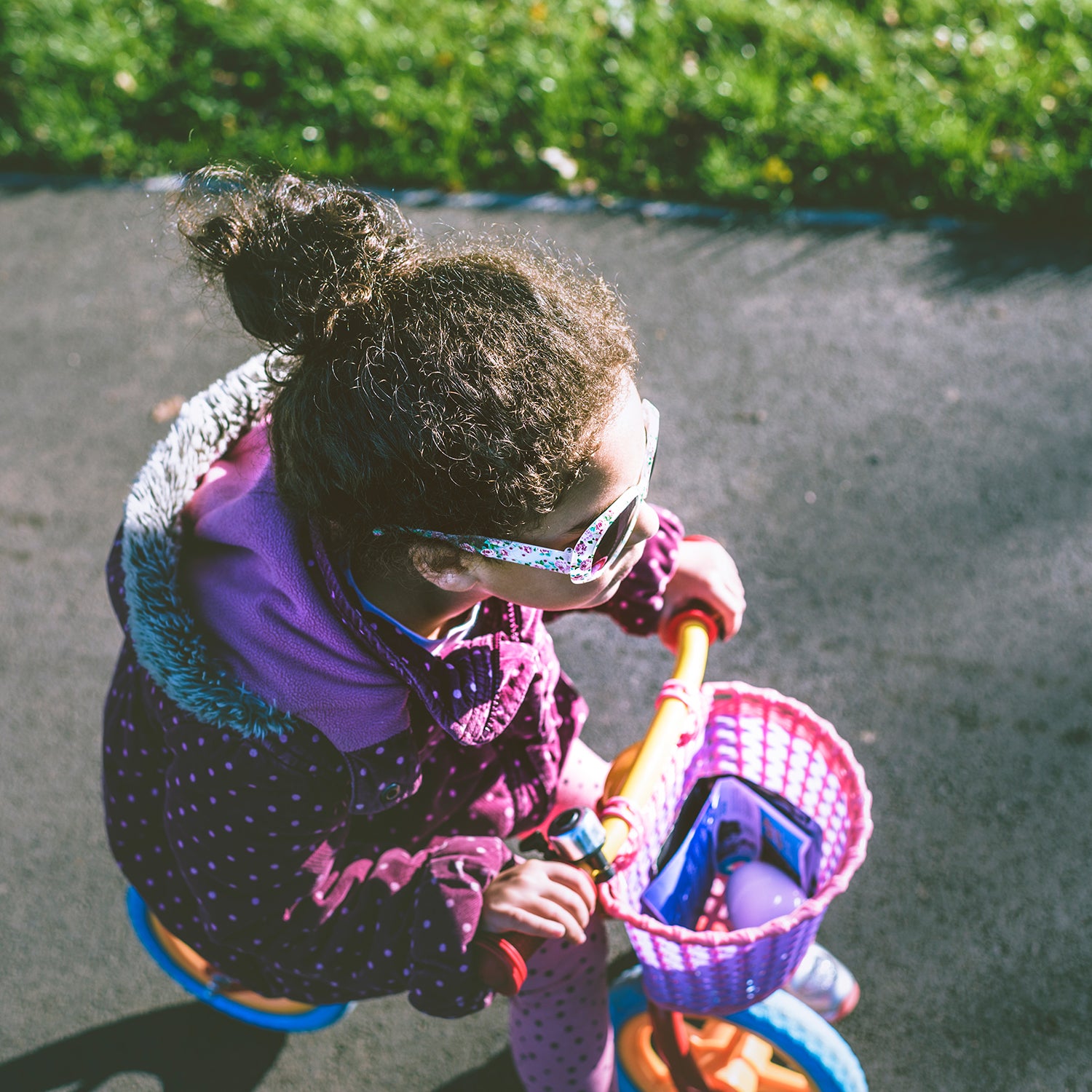When I was a girl growing up in New Jersey, my three-speed Raleigh offered me my first taste of independence. It taught me to navigate our suburban neighborhood and find my way home in time for dinner. It also schooled me in the laws of gravity and natural consequences, like the time I crisscrossed my hands on the handlebars while blitzing down a hill and crashed in a bloody heap on the asphalt. The scar became a badge of honor: proof that I was brave, if occasionally idiotic, and a member of the great two-wheeled tribe of childhood.
But times have changed. According to the federal program , the number of kids commuting on bike or foot to school has plummeted from 48 percent in 1969 to 13 percent in 2009. (On the upside, child bike fatalities have also dropped, in large part because of the decrease in participation.) In the , parents cited distance to school, traffic-related risks, and weather as the biggest barriers to biking and walking. Factor in distracted drivers and kids’ increasingly busy after-school schedules, and it’s no wonder that biking is such a tough sell.
Especially for girls.
New research presented last year shows that girls’ participation in riding drops off noticeably in adolescence. The study’s author, Jennifer Dill, an urban studies and planning professor at Portland State University, surveyed 300 families in Portland to find out how their attitudes and behavior toward bicycling changed over the course of two years. Dill found that the girls between 11 and 16 who lost interest in biking : They felt less safe riding in traffic (even in areas with designated bike lanes), they were uncomfortable riding alone and reported having trouble finding friends to join them, they believed cars were safer than bikes, and they thought biking took too much time.
If this is happening in Portland, a famously bike-friendly city, it’s hard not to feel discouraged about kids’ bicycling prospects in the rest of traffic-choked, car-dominated America. Harder still, though, is to deny the benefits of biking. According to the advocacy group , adolescents who bike are 48 percent less likely to be overweight as adults, and they’re less likely to smoke than their peers who are driven to school.
So how to support kids’ love of bikes and encourage them to stick with it? First, get them hooked early. Kids as young as two or three can learn to ride a balance bike, using their feet to push off the ground and stop. Because so-called scoot bikes teach kids how to balance on two wheels, they make the transition to pedals much easier than training wheels (both my girls were riding real bikes well before they were four). Balance-bike manufacturer Strider organizes fun rides and competitive races for the scooting set as part of the Strider World Cup, culminating with the in Boulder (of course) in July. If this sounds like overkill, stress not: It’s just as easy to rally a bunch of kiddos for some fun laps at your local playground.
Once kids graduate to real bikes, teach them the rules of the road and find bike paths and low-traffic riding routes to improve their skills. Help their school organize , or enlist nearby families to start a neighborhood “bike train” as a way to ride safely en masse to school. Youth programs help kids become stronger riders and motivate them to stay involved. Little Bellas, a Vermont-based mentoring organization, runs and rides for girls ages seven to 16 in 15 states. Likewise, Velo Girls offers specifically for women and girls. Mountain biking development, or devo, programs are cropping up around the West, from Durango to Boulder to Omaha, teaching kids everything from basic skills to racing technique. The National Interscholastic Cycling Association (NICA) runs high school mountain bike races .
Finally, get out as a family. The ���ϳԹ��� Cycling Association has mapped nearly in the country, from daylong outings to multiweek expeditions. Last summer, my husband and I took our girls, then six and eight, on a four-day, supported bikepacking trip through Bears Ears National Monument in Utah. Right out of the gate, we endured a brutal 2,000-foot climb and two hours of nonstop tantrums. It reminded me a little of the weeklong bicycle trip my sister and I went on with our dad around Prince Edward Island the summer I was 14. It rained constantly, and we always had a headwind no matter which direction we were riding; yet despite our teenage sulkiness, 30 years later we still talk about the trip like it was the greatest thing we’d ever done—cemented forever in our characters, an epic feat of survival and sisterhood.
For our girls, the Bears Ears trip has become a new baseline of grit and stamina against which all past and future endeavors will be measured. “This hill used to feel steep to me,” my seven-year-old confided to me as we biked to school last week, “but ever since we rode the Bears Ears, it’s flat.”
Ride on, girl.


